Hair Coloring & Lightening: Transforming Your Look
In the world of personal transformation, few changes are as immediately impactful as a fresh hair color. Discover what you need to know here.
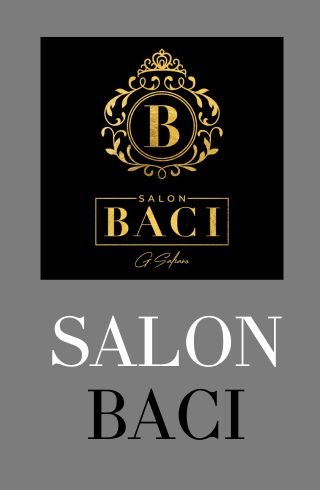
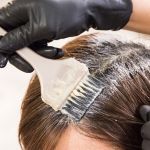
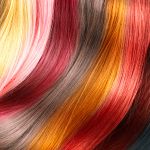
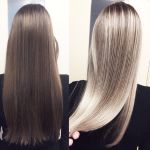

Hair Coloring and Lightening for New Looks and Styles
In the world of personal transformation, few changes are as immediately impactful as a fresh hair color.
This ultimate guide brings together expert insights, professional techniques, and science-backed advice to help you understand your options and make informed decisions about your next salon visit. Whether you’re considering balayage, highlights, or fashion colors, you’ll find everything you need to start your hair color journey with confidence.
Discover top beauty treatments for lashes, brows & waxing services. Learn benefits and aftercare for flawless results. Insights into the art and science of hair coloring.
Topics covered:
- Hair Coloring Basics & Science
- Types of Hair Coloring Services
- The Science Behind Hair Coloring
- Popular Lightening Techniques
- Fashion Colors & Creative Expression
- Toners & Color Correction
- Personalization by Skin Tone & Lifestyle
- Gray Coverage & Hair Health
- DIY vs. Professional Color
- How to Choose the Right Colorist
- 2025 Color Innovations & Trends
Understanding Hair Coloring: More Than Just a Change of Shade
It’s a common belief that Hair coloring is both an art and a science and we agree. A delicate balance of chemistry, technique, and aesthetic vision. At its core, hair coloring involves altering the pigment of your hair strands to achieve a desired shade.
“The most beautiful hair color mimics what nature creates—dimension, movement, and personalized tones that complement an individual’s unique features,” says master colorist and educator, Sarah Mitchell. “Professional hair coloring goes beyond just changing a color; it’s about creating harmony between your hair, skin tone, eye color, and personal style.”
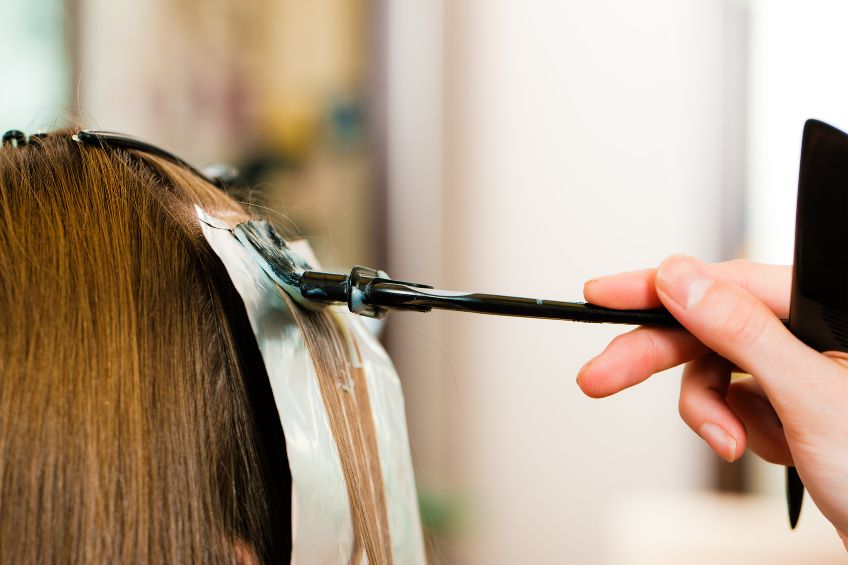
The Science Behind Hair Color
Our experience supports the view that many people simply do not understand the hair coloring process. You need to!
Your natural hair color is determined by the amount and type of melanin in your hair shaft.
“There are two types of melanin: eumelanin (which produces brown to black colors) and pheomelanin (which creates yellow to red colors). The ratio of these pigments creates your unique natural shade.” (1)
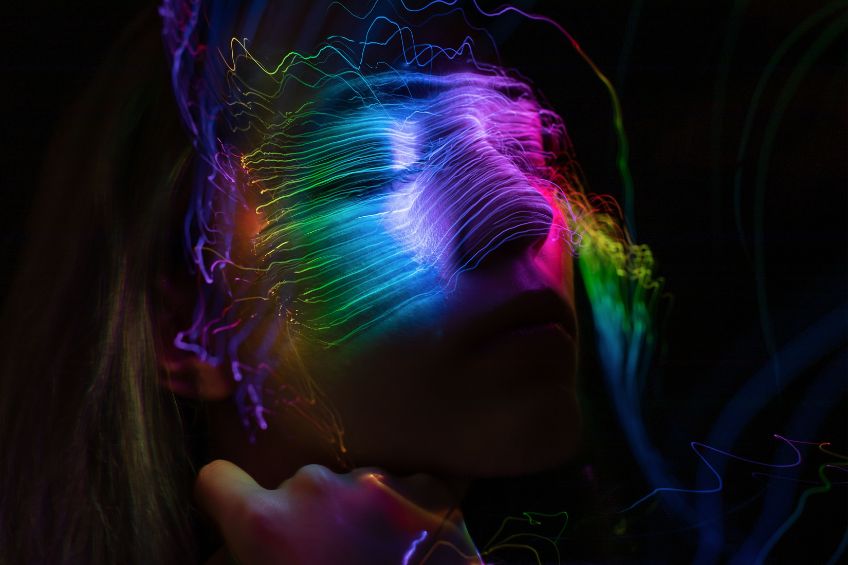
When you color your hair, different chemical processes occur depending on the type of color used:
Permanent hair color is among the most popular, It works by penetrating the hair cuticle and entering the cortex, where it combines with the hair’s natural pigment. This process typically involves two simultaneous chemical reactions: the removal of your natural hair color and the deposit of new artificial pigments.
Semi-permanent and demi-permanent colors are gentler alternatives that don’t completely penetrate the hair shaft or significantly alter your natural pigment. Instead, they coat the cuticle and partially enter the cortex, depositing color that gradually fades with washing. These two coloring services are also among the more popular,
Temporary colors simply coat the outside of the hair shaft and are easily removed with shampooing. They don’t penetrate the cuticle or alter your natural pigment in any way.
Types of Hair Coloring Services
Should you decide to use a hair coloring process to have a clear grasp of the specific types of services available. This will allow you to be in a better position to discuss or review your options.
Professional salons offer a variety of coloring services to address different needs and achieve various results:
Single-Process Color
Also known as all-over color, this technique involves applying one formula to your entire head of hair. It’s ideal for complete gray coverage, darkening your natural color, or making a subtle change to your overall tone.
As master colorist Jasmine Rivera explains, “Single-process color gives you that beautiful, consistent result when you want a solid foundation. It’s the perfect canvas for many clients, especially those wanting complete gray coverage with minimal maintenance.”
Double-Process Color
This more intensive service involves two chemical processes: first lightening or lifting your natural color, then toning to achieve the desired shade. Double-process coloring is typically used when you want to go significantly lighter than your natural color or when you’re aiming for fashion colors like pastels or vivid hues.
Highlights and Lowlights
Highlights involve lightening select strands of hair to create dimension and texture. Traditional foil highlights separate strands with foil for precise application and development. Lowlights, on the other hand, involve adding darker pieces to create depth and movement within your color.
“The magic happens when we combine highlights and lowlights strategically,” notes color specialist Thomas Chen. “This interplay of light and shadow creates a multidimensional effect that looks incredibly natural and gives hair that sought-after movement and depth.”
Creative Color Techniques
Beyond these foundational services, modern salons offer an array of specialized techniques designed to create particular effects:
- Balayage: A freehand painting technique that creates a sun-kissed, graduated lightness
- Ombré: A dramatic transition from darker roots to lighter ends
- Babylights: Ultra-fine highlights that mimic the natural lightening effects seen in children’s hair
- Foilayage: A hybrid technique combining foil highlights with balayage painting
- Root Shadowing: Deliberately darker roots that create a soft transition to lighter ends
- Color Melting: A technique that blends multiple colors together seamlessly for a gradient effect
Each of these approaches offers different benefits in terms of grow-out period, maintenance requirements, and visual impact. A thorough consultation with your colorist will help determine which technique is best suited to your hair type, lifestyle, and aesthetic goals.
Fashion Colors and Creative Expression
At our salon we pay close attention to the latest fashions. The latest trends and fashions in hair coloring is ones we watch.
While natural-looking hair color remains popular, there’s been a significant rise in demand for fashion colors a vibrant, non-natural shades ranging from pastel pinks and blues to deep purples and vivid reds.
These creative color options allow for personal expression and can be applied using various techniques from all-over application to peek-a-boo sections that reveal vibrant color only when the hair moves.
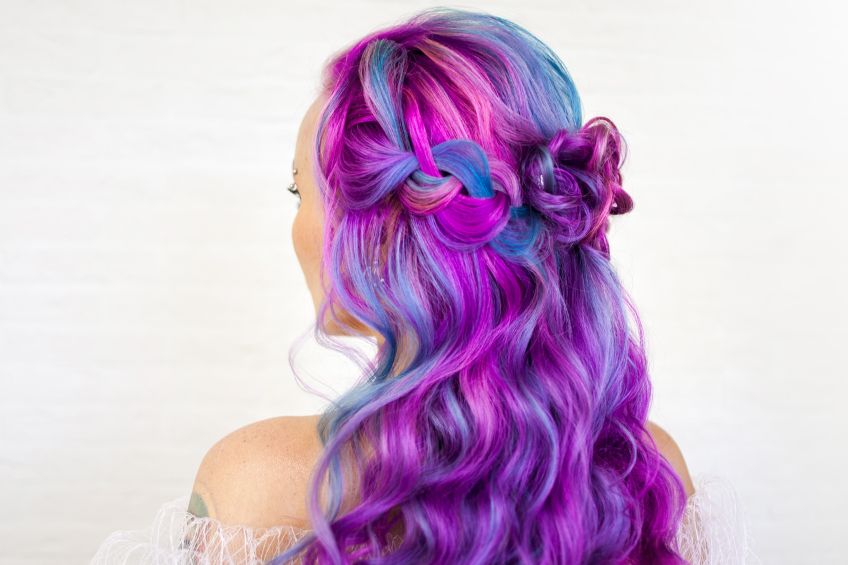
Fashion colors typically require significant pre-lightening to achieve vivid results, especially on darker hair. They also tend to fade more quickly than traditional colors, requiring more frequent touch-ups and specialized care products to maintain their vibrancy.
Hair Lightening: The Art of Creating Brightness
Hair lightening, often referred to as “bleaching” or “lifting,” is a distinct process from coloring, though the two are frequently combined. Lightening involves removing your natural hair pigment rather than adding color. This process requires careful handling by experienced professionals to minimize damage while achieving the desired level of lightness.
The Chemistry of Lightening
Our belief is that everyone undergoing a hair coloring process must understand their hair’s health andthe risks with hair coloring.
When you lighten your hair, alkaline chemicals (typically hydrogen peroxide and ammonia) penetrate the hair shaft and dissolve your natural melanin pigments. This oxidation process essentially “bleaches” the color from your hair, leaving a lighter base that can either be worn as is or toned to the desired shade.
“Lightening is one of the most transformative services we offer, but it’s also the one that requires the most technical expertise,” explains celebrity colorist Miguel Santos. “The difference between beautiful, healthy blonde hair and damaged, compromised hair often comes down to the colorist’s understanding of hair chemistry and their patience in achieving results over multiple sessions when necessary.”
Popular Lightening Techniques
Hair lightening techniques continue to grow more popular every year, recently by almost 5%.
Professional salons offer various lightening approaches to achieve different effects:
Full Bleach
A full bleach service applies lightener to your entire head, creating an all-over lightened effect. This technique is often used when dramatically changing your hair color from dark to light or preparing for fashionable colors.
Foil Highlights
By isolating strands of hair in foils with lightener, colorists can create precise patterns of lightness throughout your hair. The foil helps accelerate the lightening process by trapping heat, allowing for more significant lift in less time.
Balayage Lightening
Unlike traditional foil highlights, balayage lightening involves painting the lightener directly onto the hair surface in a sweeping motion. This creates a graduated, sun-kissed effect with softer regrowth lines.
“Balayage revolutionized how we approach lightening,” says European color educator Elise Martin. “It gave us the ability to mimic what the sun does naturally—creating those beautiful, dimensional highlights that look organic and grow out gracefully. It’s been a game-changer for clients who want lower maintenance but beautiful results.”
Ombré and Sombré
These gradient techniques focus the lightening primarily on the mid-lengths and ends of the hair. Ombré creates a more dramatic transition from dark to light, while sombré (subtle ombré) offers a softer, more blended gradient.
Toning: The Crucial Final Step
After lightening, most hair requires toning to achieve the desired shade. Freshly lightened hair often has unwanted warm undertones—typically yellow, orange, or red, depending on your starting color and how much lift was achieved. Toning neutralizes these unwanted undertones and refines the final color.
Lanza’s color correcting toners are particularly effective for this crucial finishing step, offering both damage control and precise color correction. Their advanced formulas not only perfect the tone but also help repair the hair structure that may have been compromised during the lightening process.
Personalizing Your Color Journey: Finding Your Perfect Shade
The most flattering hair color complements your natural features while expressing your personal style. When consulting with a professional colorist, several factors should be considered to customize your color experience:
Skin Tone and Eye Color
Your skin’s undertone plays a crucial role in determining which hair colors will be most flattering. Generally, skin undertones are categorized as warm, cool, neutral, or olive. The right hair color can make your complexion glow, while the wrong one can make you appear washed out or sallow.
Similarly, your eye color can be accentuated with strategic hair color choices:
- Blue eyes pop against copper and golden tones
- Green eyes are enhanced by red and auburn shades
- Brown eyes gain dimension paired with caramel and honey tones
- Hazel eyes change appearance depending on surrounding colors
“One of the biggest mistakes I see is when clients choose a hair color from a magazine without considering their unique coloring,” notes image consultant and salon owner Rebecca Fields.”
The same platinum blonde that looks amazing on someone with cool undertones can make someone with warm undertones look sallow and washed out. Personalization is everything.”
Hair Texture and Lifestyle Considerations
The texture of your hair affects how color appears and how it should be applied. Fine hair often benefits from dimension through highlights to create the appearance of volume, while thick, coarse hair may require stronger formulations to ensure even color penetration.
Perhaps one of the most practical considerations is how much time, effort, and money you’re willing to invest in maintaining your color:
- High-contrast looks (like platinum blonde on naturally dark hair) require frequent root touch-ups, typically every 3-4 weeks
- Techniques like balayage, ombré, or lowlights grow out more gracefully, sometimes allowing 8-12 weeks between appointments
- Fashion colors typically fade more quickly and may require weekly special care routines to maintain vibrancy
“During a thorough consultation, I always ask clients about their lifestyle before recommending a color service,” explains salon owner Maria Johnson. “If someone works out daily and swims regularly, we might choose a different approach than for someone who rarely shampoos and has a more low-maintenance routine. The perfect color isn’t just about aesthetics—it’s about finding something sustainable for your real life.”
Addressing Common Hair Coloring Concerns
Gray Coverage Options
The approach to gray coverage depends largely on the percentage of gray and your desired result:
For minimal gray (less than 30%): Demi-permanent color or highlights can blend grays beautifully without creating a harsh regrowth line.
For significant gray (more than 50%): Permanent color typically provides the most reliable coverage, though modern techniques like balayage can incorporate gray into a dimensional look for a more natural effect.
“Gray hair isn’t something to fear or fight against necessarily,” says silver hair specialist Olivia Chen. “Today’s options range from complete coverage to beautiful integration, depending on what makes the client feel most confident. The key is making it look intentional rather than neglected.”
Damage Prevention and Hair Health
One of the most significant concerns with coloring and especially lightening is potential damage to the hair. Professional colorists minimize this risk through:
- Thorough hair assessments before beginning any chemical service
- Staged processes for ambitious color transformations
- Bond-building treatments like Lanza’s Healing Bond system
- Customized formulations based on individual hair needs
- Proper aftercare recommendations
“Think of your hair like fabric,” explains trichologist Dr. James Williams. “Cotton can withstand higher heat than silk because of its structure. Similarly, coarse, virgin hair can typically tolerate more chemical processing than fine, previously colored hair. A professional assessment is crucial before any color service.”
Color Correction: Fixing Color Gone Wrong
Whether from a home color experiment or a previous professional service that didn’t meet expectations, color correction is a specialized service that requires particular expertise. Depending on the issue, correction might involve color removal, toning, or strategic recoloring.
Lanza’s color correction system offers specialized products that can remove artificial pigment while minimizing damage to the hair structure, making it an excellent choice for these complex services.
Understanding Your Options: Professional vs. DIY Hair Coloring
When it comes to coloring and lightening your hair, you have two primary paths: professional salon services or do-it-yourself home solutions. Both approaches have their place in the beauty world, and many people actually use a combination depending on their needs and circumstances.
Cons and Considerations for DIY Coloring
While DIY options offer advantages, they come with significant limitations:
Limited Formulation Options: Box dyes are designed as one-size-fits-all solutions and can’t be customized to your specific hair type, condition, or color history.
Unpredictable Results: Factors like previous color treatments, porosity variations, and uneven application can lead to patchy color or unexpected tones.
Challenging Techniques: Complex processes like highlights, balayage, or ombré effects are extremely difficult to achieve at home without training and specialized tools.
“At-home coloring works best for those who understand their hair’s needs and limitations,” explains color chemist Dr. Lisa Wong. “The most successful DIY colorists typically stick with shades close to their natural color and avoid dramatic lightening or complex techniques.”
DIY Hair Coloring vs. Professional Salon Coloring
|
Feature |
DIY Coloring |
Professional Salon Coloring |
|
Cost |
$5 – $30 per kit |
$60 – $300+ per service |
|
Convenience |
Anytime, at home |
Requires appointment |
|
Customization |
Limited, one-size-fits-all formulations |
Fully customized formulas matched to hair condition & goals |
|
Risk Level |
Higher potential for patchy, uneven, or damaged hair |
Lower – handled by trained professionals with quality products |
|
Technique Complexity |
Suitable for basic color (root touch-ups, single tone) |
Advanced services like balayage, highlights, toning, etc. |
|
Color Correction |
Often difficult, may worsen results |
Color correction expertise available |
|
Longevity & Results |
May fade quickly or look artificial |
Longer-lasting, multidimensional, natural results |
|
Support & Consultation |
None |
Expert consultation, hair assessments, and tailored recommendations |
.
“I always tell clients that hair color is both an investment and a relationship,” says salon owner Patricia Velasquez. “The initial service is just the beginning. Our most satisfied clients are those who understand the ongoing nature of color maintenance and build it into their beauty routine and budget.“
“At-home coloring works best for those who understand their hair’s needs and limitations,” explains color chemist Dr. Lisa Wong. “The most successful DIY colorists typically stick with shades close to their natural color and avoid dramatic lightening or complex techniques.“
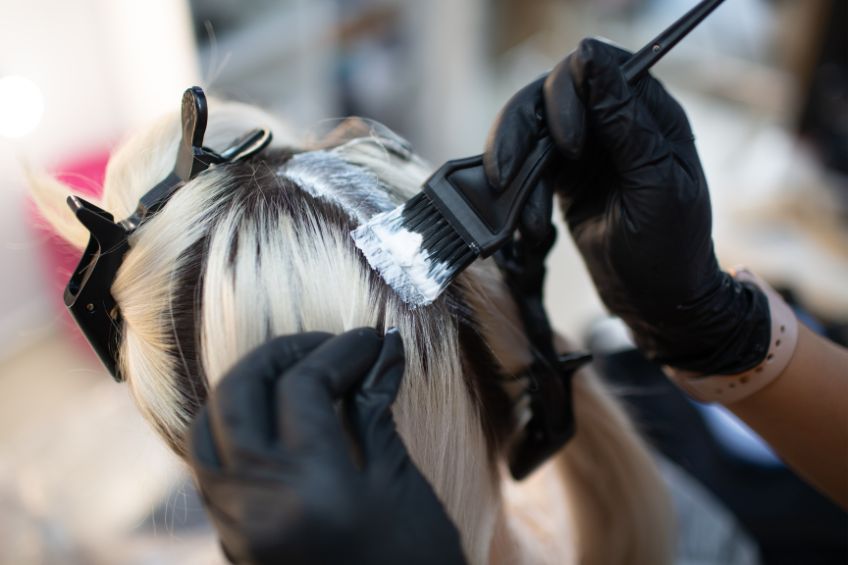
Finding the Right Colorist: Your Partner in Hair Transformation
The relationship between you and your colorist is pivotal to your hair color success. Here’s how to find the right professional for your needs:
Portfolio Assessment
Review potential colorists’ work on social media or their salon websites. Look specifically for examples of color work similar to what you want and before and after photos that show their technical skill.
Consultation Quality
A thorough consultation is the foundation of excellent color work. Your colorist should:
- Ask detailed questions about your hair history
- Analyze your skin tone and features
- Discuss your lifestyle and maintenance preferences
- Set realistic expectations about what can be achieved
- Explain the process, timeline, and cost involved
“The consultation is where the magic happens,” emphasizes education director Kevin Murphy. “This is where we translate a client’s sometimes vague wish—’I want to be blonder’ or ‘I need something more exciting’—into a precise technical plan. A rushed consultation often leads to disappointed clients.”
Technical Expertise and Communication Style
The best colorists pursue regular advanced education, stay current with the latest techniques, understand the chemistry behind hair color, and communicate effectively with clients. Don’t hesitate to ask potential colorists about their training and educational background.
Elevating Your Hair Color Experience: Beyond the Basics
Once you’ve established a solid color routine with a professional you trust, there are ways to further enhance your hair color experience:
Seasonal Color Adjustments
Many colorists recommend subtle tweaks to your hair color with the changing seasons:
- Spring/Summer: Lighter, brighter tones that reflect the increased natural light
- Fall/Winter: Deeper, richer colors that complement the seasonal wardrobe shift
Color and Cut Coordination
Your haircut and color should work synergistically to create your overall look:
- Strategically placed highlights can emphasize layers and movement
- Face-framing lightness can soften stronger jawlines or emphasize cheekbones
- Dimensional color can create the illusion of volume in fine hair
“The most successful looks come from colorists and stylists collaborating,” notes session stylist Marcus Allen. “When cut and color are designed together, the result is greater than the sum of its parts.”
The Color Consultation: How to Communicate Effectively
To ensure you get exactly what you want from your color service, prepare for your consultation with:
- Visual references of colors you like (and don’t like)
- Information about your lifestyle, workout routine, and styling habits
- Accurate information about previous color services and chemical treatments
- Clear communication about how often you’re willing to return for upkeep
Latest Hair Coloring Innovations and Trends
Innovations
- Personalized Hair Dye Solutions: The industry is moving towards personalized hair dye kits tailored to individual hair types, colors, and styles. This trend is driven by advanced algorithms and consultations to ensure a seamless color blend and enhance user experience.
- Sustainable and Eco-Friendly Hair Dyes: There is a growing demand for plant-based and biodegradable formulations that minimize environmental impact while providing vibrant colors. These dyes are safer for both hair and the environment. (2)
- Temporary and Semi-Permanent Options: Temporary and semi-permanent hair dyes are gaining popularity due to their flexibility and lower damage compared to permanent dyes. They allow users to change their look frequently without long-term commitment.
- Technology Integration: Salons are incorporating technology like virtual consultations and augmented reality (AR) mirrors to enhance client experiences. These tools help clients visualize hairstyles and colors before committing to them.
Trends
- Natural and Bold Colors: Hair color trends in 2025 range from natural enhancements like soft highlights and babylights to bold statement colors such as neon blues, fiery oranges, and vibrant purples.
- Ammonia-Free Hair Dyes: Ammonia-free hair dyes are becoming the standard due to their gentler formula, which helps maintain hair moisture and reduce damage.
- Blonding Techniques: Techniques like balayage and foilayage continue to evolve, offering personalized and natural-looking blonde shades with minimal upkeep.
- Platinum Blonde: Platinum blonde remains a popular choice, especially with the use of products like LIT and Violet Shampoo to achieve a vibrant, icy finish.
- Teal and Cool Tones: Teal semi-permanent hair dye and cool tones like platinum blonde and brown are trending for their bold, futuristic looks8.
Key Takeaways
- Sustainability: Salons are focusing on eco-friendly practices and products to align with consumer preferences for health and environmental consciousness.
- Personalization: Customized hair dye solutions and tailored services are becoming more prevalent.
- Technology: Virtual consultations and AR tools are enhancing the salon experience.
- Innovative Products: New hair products focus on multi-tasking and minimizing damage, such as bond-building serums.
(Sources for Trend Research) (2)
Embracing Your Color Journey: Moving Forward with Confidence
Hair color is not merely a service but a journey—one that evolves with your life stages, style preferences, and the changing seasons. Whether you’re making your first foray into professional color or are a seasoned color client looking to refresh your look, remember that the most beautiful results come from a collaborative relationship with a skilled professional who understands both the science and art of hair color.
The right hair color enhances not just your appearance but your confidence, allowing your inner beauty to shine through. It’s a powerful tool for self-expression and transformation, one that deserves thoughtful consideration and professional expertise.
As you explore your options and define your personal color aesthetic, remember that there are no absolute rules—only guidelines to help you achieve the most flattering and satisfying results. Your perfect hair color is ultimately the one that makes you feel most authentically yourself.
We invite you to continue this conversation with our expert colorists, who can provide personalized guidance tailored to your unique features, preferences, and lifestyle. Together, we’ll craft a color strategy that brings your vision to life while maintaining the health and beauty of your hair.
Ready to explore your hair color possibilities? Schedule a personalized color consultation to begin your transformation journey with confidence. See Hair Highlighting 10 Tips for more information.

ADDITIONAL INFORMATION & RESOURCES
Salon Baci Home Page
REFERENCES
- Rita Charitable Trust: Hair Color, https://ritacharitabletrust.org/hair-color/#google_vignette
- Be Clever: https://becleverman.com/blog/the-future-of-hair-dye-trends-and-innovations
Color Trends & Innovations Research Sources:
https://becleverman.com/blog/the-future-of-hair-dye-trends-and-innovations
https://www.gaminebeauty.com/2025s-coolest-blonding-techniques/
https://lv3.com/blogs/for-the-barber/hair-trends-in-2025-creating-the-perfect-platinum-tone
https://sevich.com/2025-hair-dye-color-products-trends/
https://behindthechair.com/articles/11-new-hair-launches-to-kick-off-2025/
Images Sources [In text by order]
CaAnva Pro – by Kzenon
Canva Pro – by Meryl Katys from Pexels
Canva Pro – by KrisCole from Getty Images
Category Canva Pro – by primipil
Page Header Images from Canva Pro:
- by ThamKC from Getty Images
- C by Anna Subbotina
- by shumskaya from Getty Images Signature
- by Jun from Getty Images
- by pixelshot
Graphics: Created in Napkin.app & Canva
Image: from Canva.com / Pro
Hair coloring by Kzeneo
Science of hair lightening by Meryl Katys from Pexels
Fashion by KrisCole from Getty Images
Finding a Salon by primipil
Article Content Development and AI: Refer to Terms & Conditions Page,
Copyright Salon Baci |2025 | All Rights Reserved
